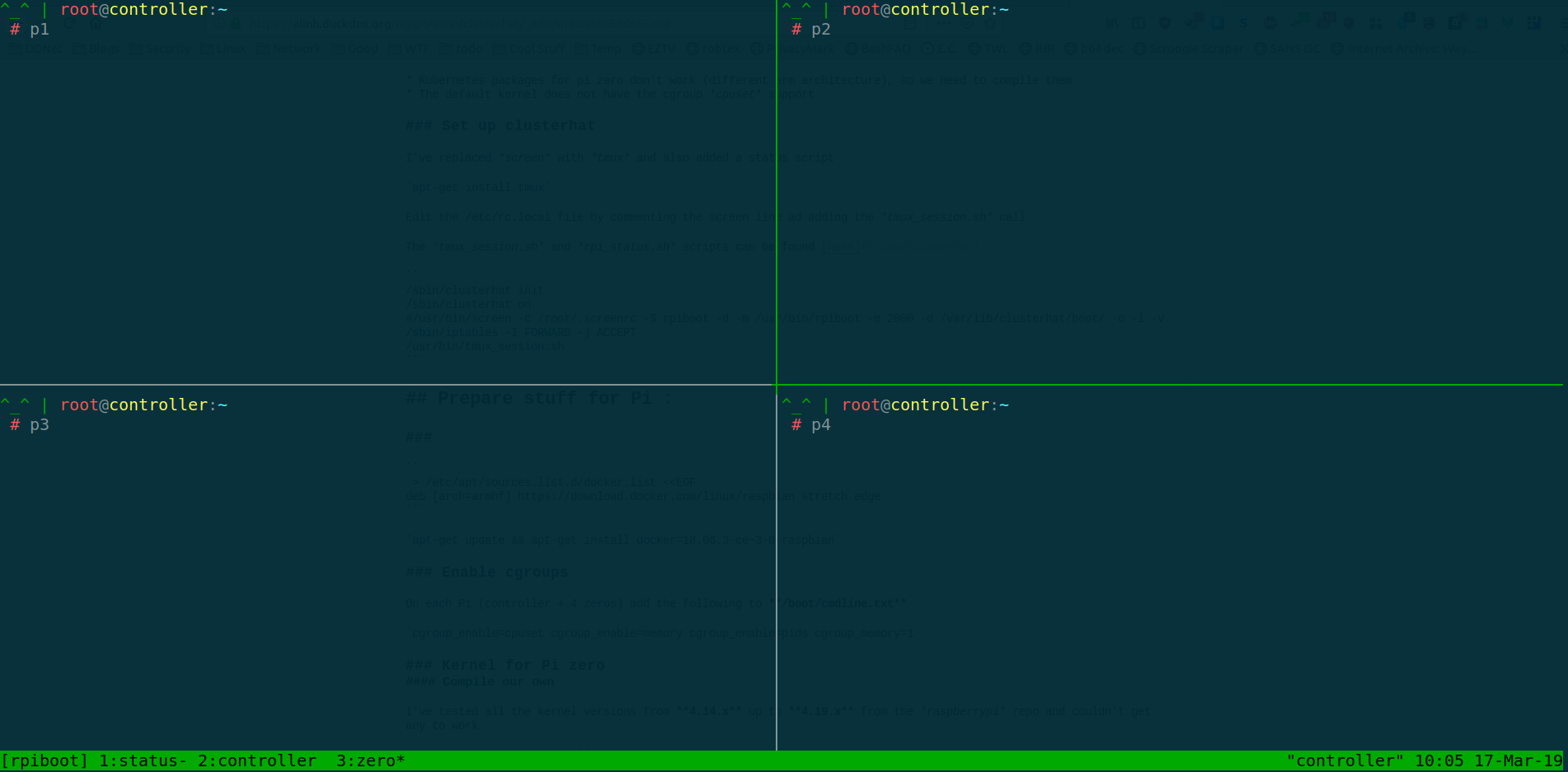Thse are the steps needed to set up a Kubernetes cluster on Clusterhat. "The Cluster HAT (Hardware Attached on Top) which interfaces a (Controller) Raspberry Pi A+/B+/2/3 with 4 Raspberry Pi Zeros configured to use USB Gadget mode is an ideal tool for teaching, testing or simulating small scale clusters." from the Clusterhat website.
I've used the rpiboot image (ClusterHAT-2018-10-13-lite-1-usbboot.zip at the time of this writing) which allows you to use the Pi zeros without sd card.
Setting up Kubernetes is largely based on Kelsey Hightower's Kubernetes The Hard Way.
Due to github's file size limit (and also to keep the transfers fast) I've gzipped most of the files
After cloning the repo you can run find . -name *gz -exec gunzip {} + in the clusterhat-kubernetes to get the uncompressed files back
- Kubernetes packages for pi zero don't work (different arm architecture), so we need to compile them
- The default kernel does not have the cgroup cpuset support
I've replaced screen with tmux and also added a status script
apt-get install tmux
Edit the /etc/rc.local file by commenting the screen line ad adding the tmux_session.sh call
The tmux_session.sh and rpi_status.sh scripts can be found here
/sbin/clusterhat init
/sbin/clusterhat on
#/usr/bin/screen -c /root/.screenrc -S rpiboot -d -m /usr/bin/rpiboot -m 2000 -d /var/lib/clusterhat/boot/ -o -l -v
/sbin/iptables -I FORWARD -j ACCEPT
/usr/bin/tmux_session.sh
/sbin/iptables -I FORWARD -j ACCEPT is needed because as soon as you install docker, the world ends (not really, but you'll have problems with the pi zeros network connectivity)
If everything goes well you should now have a working Kubernetes cluster
# kubectl get nodes
NAME STATUS ROLES AGE VERSION
controller Ready master 2d v1.13.3
p1 Ready <none> 2d v1.13.3-dirty
p2 Ready <none> 2d v1.13.3-dirty
p3 Ready <none> 2d v1.13.3-dirty
p4 Ready <none> 2d v1.13.3-dirty
Test it
kubectl run nginx --image=tobi312/rpi-nginx
and scale it
kubectl scale deployments nginx --replicas=3
It won't win any speed contests, but it works.
# kubectl get pods -o wide
NAME READY STATUS RESTARTS AGE IP NODE NOMINATED NODE READINESS GATES
coredns-75548f47f9-b8z5l 1/1 Running 1 11m 10.200.0.9 controller <none> <none>
nginx-7574679f4d-js4tk 1/1 Running 0 75s 10.200.2.140 p2 <none> <none>
nginx-7574679f4d-vz44f 0/1 ContainerCreating 0 75s <none> p4 <none> <none>
nginx-7574679f4d-z4vnq 1/1 Running 1 10m 10.200.0.11 controller <none> <none>

